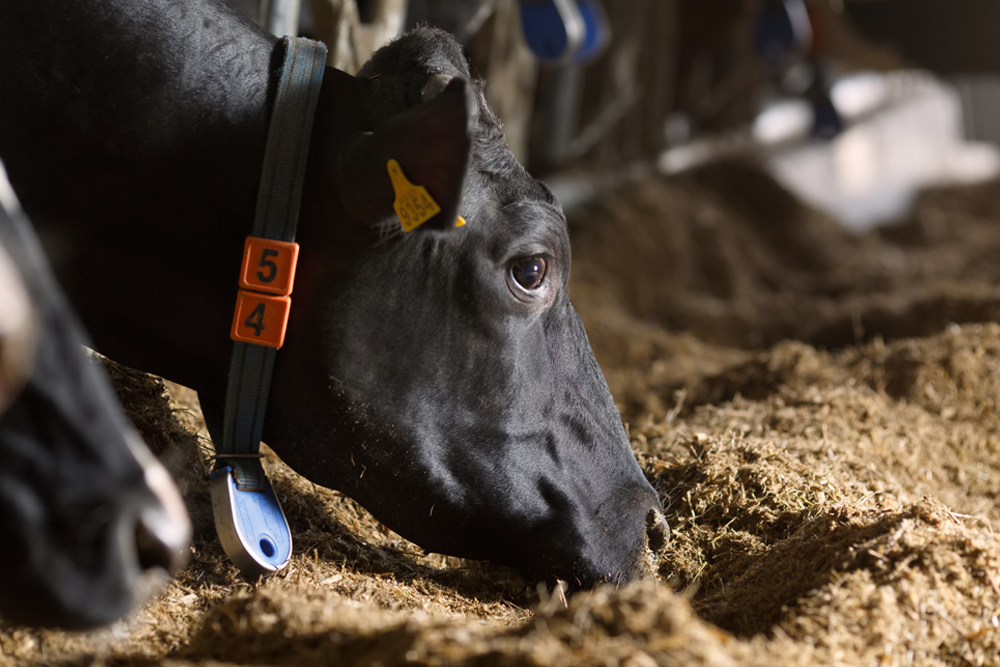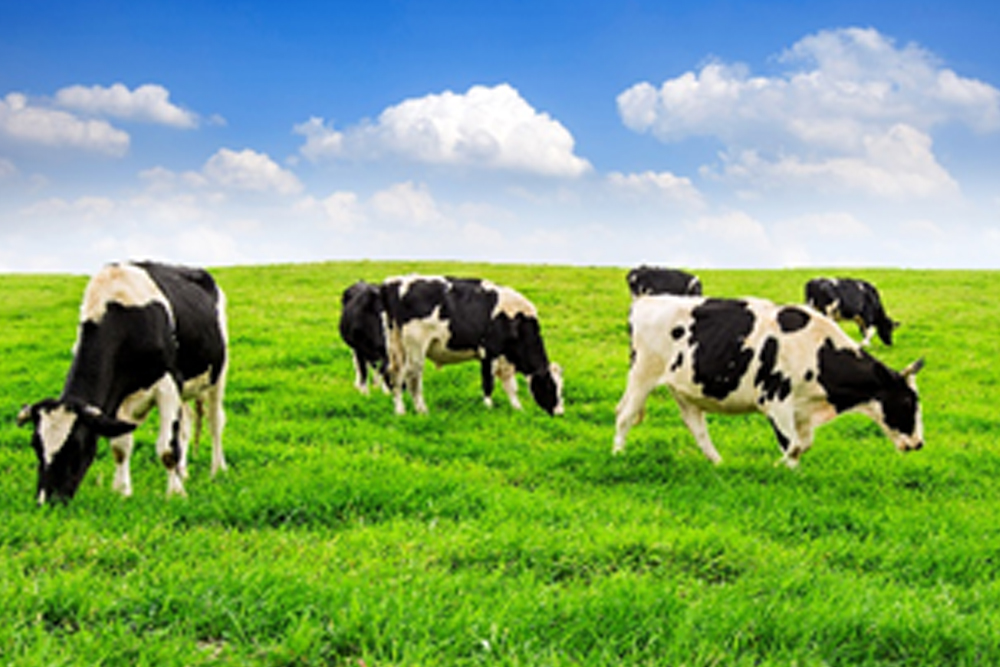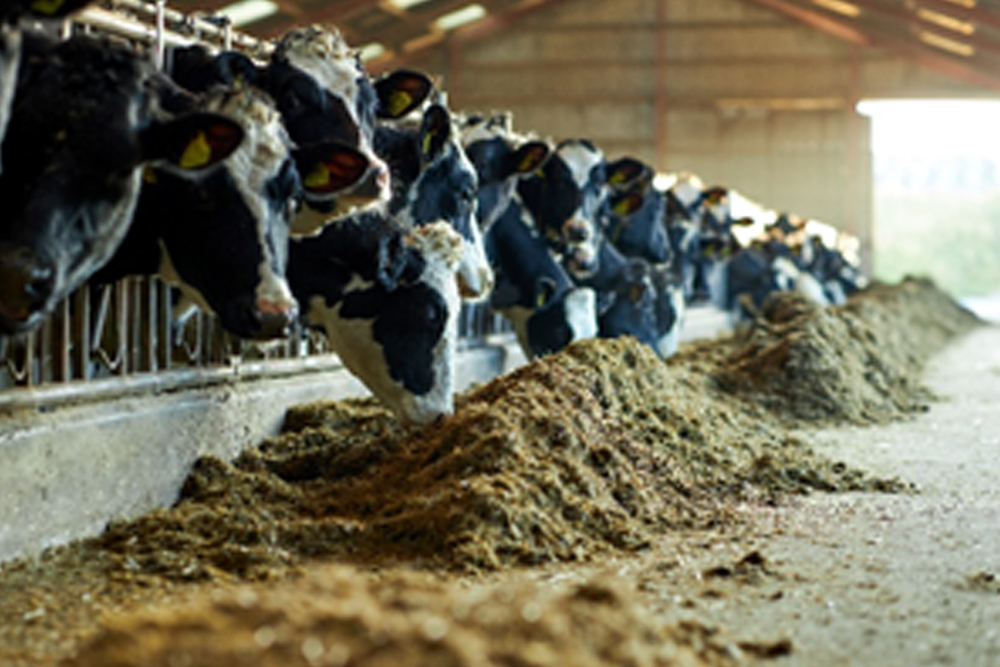ROLE OF CARBOHYDRATES IN DAIRY COW NUTRITION

CARBOHYRATES
There are two main classes of carbohydrates.
Simple carbohydrates are easily digestible. They are found in concentrates like corn, wheat, oats, barley and sorghum. Most common simple carbohydrates includes sugars and starch.
Complex carbohydrates are hard to digest as compare to simple carbohydrates. Lignin and cellulose are the best examples of complex carbohydrates. These carbohydrates are mostly present in hay and pasture plants.
Another way of categorizing carbohydrates is the amount of fibers they contain. Fibrous carbohydrates are generally measured as neutral detergent fiber (NDF) and expressed as a percentage of dry matter. Non fiber carbohydrates (NFC) are calculated by subtracting the dry matter proportions of NDF, fats, crude protein and ash from 100%. Non fiber carbohydrates are normally consist of starch, sugars and fructans, pectin and organic acids. In fermented feeds, fermentation acids also contribute to the non-fiber carbohydrate part of the feed.
In general fiber in the diet supports rumen health. Fiber in the rumen, especially from forage sources that have not been finely chopped or ground, maintains rumen distention, which stimulates cud chewing, salivary flow and motility. These actions affect the rumen environment in a positive manner by stimulating the endogenous production of salivary buffers and a high rate of fluid movement through the rumen.
PASTURE AND CARBOHYDRATES

FORMULATING RATIONS
Numerous factors influence the amount of forage NDF and total NDF that is formulated in rations.
Starch and Sugar recommendations
The optimal amount of starch and sugars in dairy cattle diet in not well defined. But when balancing ration for starch, an acceptable range in milk producing cows is 20 to 30 percent on dry matter basis. Sugar levels can range from base level to about 9% on a dry matter. There are so many other factors to consider other than their percentage in diet. Those factors includes frequency of grain feeding, forage particle size, site of starch digestion, use of by-product feeds, fiber digestibility, grain processing method and dry method intake.
Here are the starch levels in the lactating cow diets on the basis of dry matter.

Milk containing dust particles, dirt, foreign materials, high bacterial count and bad flavors considered as contaminated milk. Following are the chief sources of milk contamination:
Formulating ration with an ideal forage NDF is challenging. If low fiber level are formulated, other factors should be kept in mind like certain nutrition, management and environment issues. These can have a huge on animal performance. Level of starch and its digestibility is also very important other than NDF.
Formulation of NDF dietary amount is totally dependent on fiber source, amount, physical characteristics of forage and physiological state of dairy cow.
There are several indicators which needs to be monitor that may reflect ration improperly balanced or implemented carbohydrates. These include rumination, cud chewing, milk fat percentage and dry matter intake, metabolic problems like ketosis, lameness, fecal consistency and ruminal acidosis.
Deficient starch or Excess NDF
The maximum concentration of NDF in the ration is also term as the minimum amount of starch or sugars needed for good fermentation in rumen and to avoid the negative impact on dry matter intake on rumen fill. The maximum amount of forage NDF

Health of cow has negative impact of reduction of NDF and high starch amount in ration. Generally, this condition is termed as ruminal acidosis. It can be detected by disturbance in the following factors: ruminal pH, chewing activity and milk production. Long term effects include ketosis, abomasal displacement, liver abscesses and laminitis.
At Dasan Feeds, we strive to keep our formulations as consistent, for as long as possible in the firm belief that consistency in quality is the key to get maximum production. Dasan Feeds manufacture high quality Dasan dairy feeds/ Dasan dairy wanda specifically formulated for all stages of dairy and livestock.

